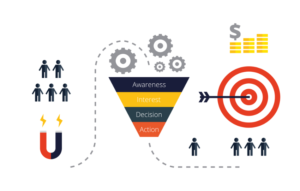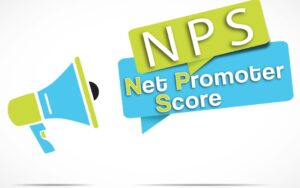
How to Optimize Customer Engagement?
You definitely have what it takes to attract new leads and grab new customer’s attention, as well as keep your customer loyal, as a business owner and a marketer.
You can do so through different ways and that is an attractive design, interesting blog content or even paid ad campaigns, and many more ways to attract new customers to your brand.
However, how can you measure if you are n the right direction? How to measure if what you are doing is already paid off?
It is very simple, By monitoring customer engagement metrics. By gathering some data you can understand and know how your audience is responding to your marketing strategy, including content, visuals, and by having these data you can put your hands on the points that needed to be improved and how to encourage more engagement.
In this article, we will give you some tips and tricks that will help you to measure customer engagement metrics.

Customer engagement metrics
What is customer engagement metrics?
Customer engagement metrics is the tool that measures how your audience interacts with your online marketing campaigns.
For example, for an email campaign, the main engagement metrics , might be open and click rates.
As for the paid ads on Facebook, the key engagement metrics might be the percentage of people who click the promotion’s call to action (CTA) button.
The customer engagement metrics may vary depending on the goal of your marketing campaign, which will affect the actions you want the user to take.
In the following list, some recommendations that will help you measuring engagement metrics.

1. Conversion rate
Campaign’s conversion rate is the tool that measures the percentage of the people who respond to your call to action that’s tied to your campaign goal.
Here are some examples of conversion goals:
- Download an eBook
- Sign up for the newsletter
- Registering for a free product trial
- Clicking on a Facebook ad
- Landing on your website’s pricing or the product page
How To Calculate Conversion Rate?
The conversion rate varies from one campaign to another, but there is only one and easy way to calculate the conversion rate. Divide the total number of conversions by the total number of visitors (or sessions), and multiply that figure by 100.
Why Conversion Rate Is Important?
Conversion Rate is one of the essentials for every marketer, this customer engagement metric helps you determine how effective your campaigns are at getting users to do what you want them to do.

2. Pages per session
In this customer engagement metric, it measures how many pages of your website a user clicks through to within a single visit.
A high page-per-session rate is generally an indication that visitors find your content helpful, authoritative, and engaging.
Conversely, a low page-per-session rate could indicate that your content isn’t relevant to the consumers you’re targeting or that your site is poorly structured.
If you have a low page-per-session rate, there might be several factors that might be the reason behind this phenomena:
- Internal Links: Internal links are used to guide the users to different pages or resources on their website. Make sure that your internal links lead to truly relevant and related resources, or you will confuse the readers and they will leave your website eventually.
- Site structure: High page per session can’t be excepted if your site structure is hard to use. Making sure that your site structure is clear and friendly using is one way to increase your page per session.
- Content quality: The reason behind low pages per session could be a quality issue. If your content is not up to the standards of your audience, they will lose their interest and eventually lose interest in your brand. Reviewing each page on your website is a great place to start auditing your content.
How to Measure Pages Per Session?
To measure Pages Per Session, you’ll need to use Google Analytics.

3. Session Time
Session time usually refers to the amount of time your visitor spends on your website whether reading a blog article or just surfing the landing page.
This Long session times on landing pages can help you to identify which feature or service or even product your customer may seem interested in the most and willing to spend much more time learning about it.
Using this data, you can create campaigns with specific pain points that your customer showed an interest in.
For example blog posts that have a higher longer session time can help you and your team to know which type of content your audience favored.
This information can be used to create new content around similar topics that drive even more traffic to your site.
How To Track Session Time?
Google Analytics can track session times for all your pages automatically. In the tool, session time is called “session duration.”

4. Net Promoter Score
Net promoter score (NPS) is used to measure your customer loyalty or, more precisely, how likely your customers are to recommend your brand to others.
Net Promoter Score is a critical metric as it helps you understand how satisfactory your product is to your customers’ needs.
NPS is one of the easter metrics you can measure, and you can do so simply by surveying your customers.
Increase marketing ROI with customer engagement metrics
With customer engagement metrics, you don’t have to guess whether your marketing is working. Measure the four metrics mentioned in this article, and you’ll have a clear idea of how your website and campaigns could be improved to resonate with your target audience. With these data insights, you can confidently spend your marketing budget on initiatives that have sparked engagement in the past.
According to your marketing goals, and your marketing strategy, there are several ways you can depend on to measure your customer engagement.
However, the four mentioned metrics in this article are a great way to start measuring your customer engagement.


